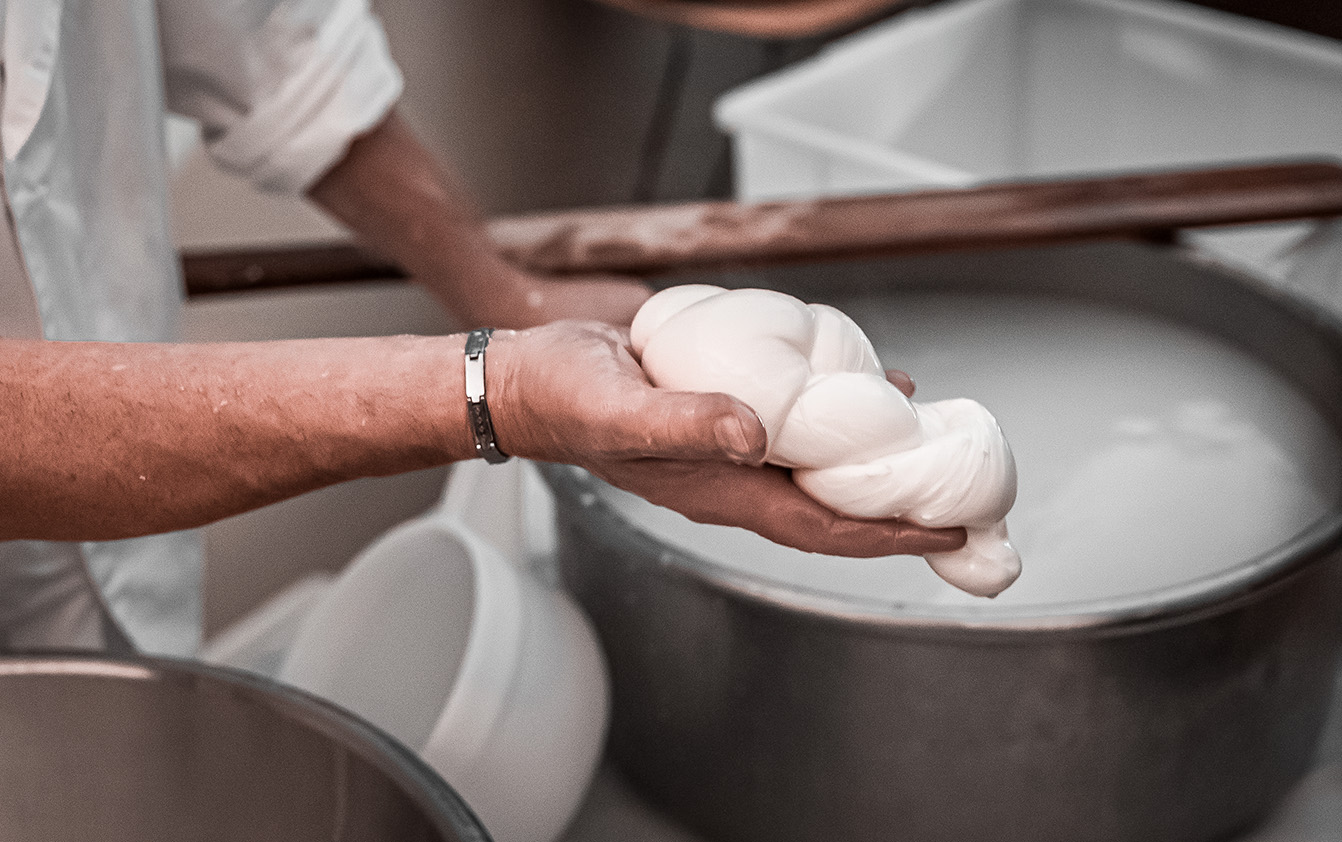26 Aprile 2022

Mozzarella is a fresh spherical stretched curd cheese originating from southern Italy. Today its production is widespread throughout Italy and in various countries of the world. It owes its name to the mozzatura operation performed to separate the individual pieces from the dough during the craftsmanship. It is prepared with buffalo milk or cow's milk. Now let's see the various denominations: Campania buffalo mozzarella indicates the protected designation of origin buffalo milk mozzarella; think that until 1966 it was the only one that could be called simply "mozzarella".
Buffalo milk mozzarella indicates the buffalo mozzarella that does not have the protected designation of origin. Mozzarella fior di latte indicates cow's milk mozzarella. Mozzarella is the third most appreciated cheese in the world after Parmigiano Reggiano and Grana Padano. Mozzarella is not all the same. A pinch of attention is enough to decode the wording on the label and a few notions on processing methods to be able to distinguish one product from another. To distinguish a handcrafted product from one obtained with industrial techniques, you need to start reading the labels. The production of mozzarella involves the acidification of the milk, which is traditionally done by exploiting bacterial fermentation, assisted by the addition of natural whey starter. This operation can take up to four hours and significantly affects the entire production phase. The advantage is that this processing method makes the mozzarella tastier and also more digestible. The lactic ferments, in fact, consume up to 80% of the lactose contained in the milk and instill a typical flavour. Industrial acidification is obtained by adding citric acid to milk and is much faster. The delicate aspect of the matter is that the legislation does not oblige producers to indicate the addition of citric acid on the label. To recognize an industrial product, it may be sufficient to take a look at the price: a product for less than 5 €/kg will hardly be a quality mozzarella. The fior di latte we use is from the Valleverde company, the excellence of the fior di latte from Bojano. The Valleverde company offers a selection for those who are not satisfied with traditional products. These are all handmade, to which particular attention is paid in the preparation of the pasta in filatura. The other dairy that supplies us with buffalo mozzarella from Campania is the Salicella di Francolise dairy. This is a family with over sixty years of history and tradition as breeders and processors. Here we work the Campania DOP buffalo mozzarella scrupulously observing the artisanal process dictated by ancient teachings in full respect of nature and current regulations on hygiene and food safety. The milk for processing comes from buffalo farms, where the buffaloes are raised in semi-free stalling. Mozzarella Salicella received a qualitative recognition from Slow Food and in 2012 the three segments with the best Italian cheeses from Gambero Rosso. Furthermore, we have a buffalo mozzarella that comes from the Latte e Sale dairy. The buffalo breeding of this company is located on the hills between Faiano and Santa Tecla di Montecorvino Pugliano, where the buffaloes can graze freely. Every day the milk is transported to the dairy in the city where it is spun on sight and transformed into fresh and delicious products. Our paper pizzas that have mozzarella as an ingredient are the Pachineat, the special Pachineat, the Colonnata, the Patata del Fucino, the Neapolitan Scarola, the Baccalà allo Zafferano, the Nduja di Spilinga and the Tartufo.